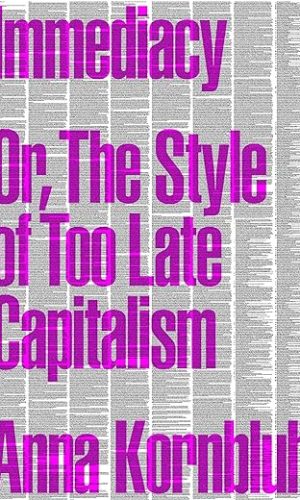The Choice Factory: 25 behavioural biases that influence what we buy
£10.60£14.20 (-25%)
Winner of the Sales and Marketing Category at the 2019 Business Book Awards
If you’re in the business of influencing decisions, you need to understand what drives them. The Choice Factory is an essential read for anyone who wants to learn. Taking us through a typical day of decisions, from trivial food choices to life-changing career moves, The Choice Factory explores how our behaviour is shaped by psychological shortcuts. The focus throughout is the marketing potential of knowing what makes us tick. Shotton draws not only on academia, but also on analysis of ad campaigns and his own original research, supporting his discussion with insights from some of the smartest thinkers in advertising.
The Choice Factory is an entertaining and highly-accessible read, with 25 short chapters, each addressing a cognitive bias and outlining easy ways to apply it to your own business challenges. Dip in or read cover to cover and you ll be full of new ideas, ready to crack any brief.
Read more
Additional information
| Publisher | First Edition (12 Feb. 2018), Harriman House |
|---|---|
| Language | English |
| Paperback | 218 pages |
| ISBN-10 | 085719609X |
| ISBN-13 | 978-0857196095 |
| Dimensions | 16 x 1.14 x 21.23 cm |










by MR A J HILL
This is a go-to book for all marketers and communicators. It should be in all job descriptions – must have read this book. I have it near me – always! It is beautifully written, easy to read and timeless. It will always be relevant to anyone that believes in understanding people’s behaviour. A thank you to the author!
by Colin Hammond
Insightful and well researched
by A. J. Willshire
This is a superb fountain of knowledge, written in a highly accessible form. I’m no academic, but I do have an inquisitive nature as to how psychology and behaviour work together.
Each bias is introduced with a case study / experiment to provide context, followed by a short discussion to aid understanding and then ideas as how to implement. The beauty for me is that it’s written in layman’s terms, so anyone can benefit and each bias is covered in a handful of pages making it easy to dip in and out of.
A must have for any marketer and a great read for anyone who wants to understand better how we ‘tick’.
Find a comfy chair and read on. Looking forward to the next instalment!
by Marc
This is a great little book, full of interesting nuggets of information and practical suggestions for putting theories into practice.
There are 25 short chapters, each describing a bias exhibited in human behaviour and how they might be exploited in order to create a more effective marketing campaign. Much reference is made to notable advertising campaigns and space is given to leading industry figures to weigh in with their opinions.
This book is also an excellent primer on behavioural science. I had heard of many of the biases before but having them all presented together is really helpful and helps the reader compare and contrast quite readily. While other books go into much more depth on some of the ideas, this conveys essential concepts quickly – ideal if this is your first foray into behavioural science. (If you don’t work in marketing, however, you will find it interesting but large chunks may be less relevant)
I’ve worked in advertising analytics for a decade and I know Richard to be one of the foremost thinkers and practioners in the field. This is apparent throughout because he is able to draw on first-hand experience running experiments, gathering data and planning campaigns. It’s also worth following him on Twitter – @rshotton – to benefit from a near-constant stream of ideas or concepts that have crossed his desk. Some people hoard their learning – Richard is extremely generous with his.
(Extremely) Minor quibbles:
As the book progresses, the author describes how each bias might occur in the course of a single day. I found some of these to be slightly contrived in places. Also, because the chapters are self-contained, there can be superfluous repetition, e.g., one industry figure was introduced in almost the same way in two chapters very close to each other.
A slightly larger quibble relates to a well-known study referenced uncritically in a chapter. Given that another study is ruthlessly (and correctly) dissected in the book, I’d have liked to have seen similar analysis across the board.
However, the book entirely succeeds in its aims and I would have no hesitation in recommending it to anyone working in marketing who wishes to understand more about the strange ways that we all behave when it comes to making purchases.
by Marc
As a Chartered Marketer, with c.25 years-experience in Marketing & Consultancy, as a Board Member of an Olympic Sport and as a University Lecturer teaching about Marketing and Strategy, I love it when books come along that make you ‘Think Different’, by sharing insights and knowledge that is not only entertaining, but exceptionally well, supported with many useful examples and nuggets from practice and academic research.
If you DO NOT want to learn, then I would recommend that you do not read this book.
If, however, you want to learn all about biases that impact upon individuals, organisations, marketing and marketing communications, dive right in.
I was so fascinated with the book, that it only took me a few days to read cover to cover – whilst at the same time reviewing some of the journal papers that are introduced.
The concepts discussed in individual chapters include The Fundamental Attribution Error, Social Proof, Negative Social Proof, Distinctiveness, Habit (Disrupt this), The Pain of Payment, The Danger of Claimed Data, Mood, Price Relativity, Primacy Effect, Expectancy Theory, Confirmation Bias, Overconfidence, Wishful Seeing, Media Context, The Curse of Knowledge, Goodhart’s Law, The Pratfall Effect, Winners Curse, The Power of the Group, Veblen Goods, The Replicability Crisis, Variability, Cocktail Party Effect and Scarcity as well as the Bystander effect.
Even if you have experience of these concepts, some of the insights also help you think about different examples too, which link to your areas of interest.
Be willing to learn why Peroni can help sell more Carlsberg or Budweiser, or why football fans may even struggle to remember which beer brands are sponsoring the games they are watching or the teams they support. And then, if you are watching football or sport, why the pubs, cafes, restaurants, off-licences, or supermarkets hope that you have not brought cash. Similarly, if you are drinking coffee or soft beverages, are you noticing if the coffee is costing you £74/Kg, or why a smaller, funny tasting drink is costing you a lot more than drinking Coca-Cola (simply because it tastes funny).
I cannot recommend this book more highly to any of my students, friends and colleagues interested in learning about things that are not always obvious.
When the World Zigs – Zag!